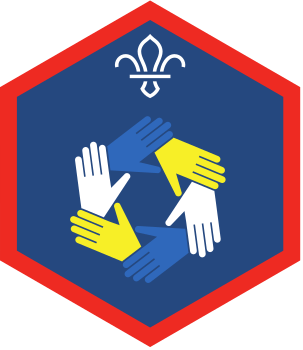Get the cards right
You’ll need
- Playing cards
- Everyone should split into teams of between six and eight people.
- Each team should choose a ‘dealer’ and a ‘copycat’. Everyone else will be a messenger.
- The person leading the game should give the dealers and copycats a set of cards each.
- The dealers should stand at one end of the meeting place. The copycats should stand at the other end of the meeting place, in line with their team’s dealer.
- The messengers should make a line between their dealer and copycat. They should try to be fairly evenly spaced.
- The dealer should lay ten cards on the ground in any pattern or order.
- The first messenger should go to the dealer. The dealer should describe the cards to them – they should include what the cards are, the order they’re in, and their layout.
- The first messenger should go to the second messenger and pass on as much of the description as they remember.
- The second messenger should pass as much information on to the third player. The messengers should continue passing the message along their line.
- When the information reaches the copycat, they should lay out their cards to match the description. If they don’t have enough information for ten cards, they might like to guess where to put some.
- Once the copycat’s locked in their answers, the team should gather around.
- Each team should compare their two decks. The dealer could note down the order of the cards on a scrap piece of paper, take a photo, or even carefully carry the cards across the meeting place on a tray. Are the two layouts the same?
- Everyone should gather together and reflect.
Reflection
This activity was all about communicating and working as a team. What problems did the teams come up against? What did they do to overcome the problems? Did different people play different roles in the team? People might think about how the dealer needed to pass on a lot of information clearly, the messengers needed to remember information and pass it on, and the copycat had to be good at following instructions. Was it easier to be the first messenger or the last messenger? People might think about how they could line the messengers up tactically depending on people’s skills. When else might people need to use their communication skills to help the rest of their team visualise something?
Safety
All activities must be safely managed. You must complete a thorough risk assessment and take appropriate steps to reduce risk. Use the safety checklist to help you plan and risk assess your activity. Always get approval for the activity, and have suitable supervision and an InTouch process.
- Active games
The game area should be free of hazards. Explain the rules of the game clearly and have a clear way to communicate that the game must stop when needed. Take a look at our guidance on running active games safely.
- It’s up to you how many cards you lay out. We’ve suggested 10 as a starting point, but you could use more or fewer. You could also restrict teams to the same layout (or give them a few options) rather than letting them choose any shape.
- You could turn it into a competition, awarding points for getting the right cards in the right order, the right layout, and good teamwork.
- It’s up to you whether the messengers can repeat their messages and ask questions.
- You could allow the copycat to ask questions that the messengers can pass to the dealer.
- To make it trickier, get the messengers to travel further or negotiate obstacles on their way. It’ll be harder to remember details if you have to move between rooms or jump through hoops!
- If anyone can’t pass the message on by speaking and listening, they could read it, then write it out again. If people struggle to hear people speaking quietly, they could move to another room, or the others in the team could cover their ears.
- If you add extra obstacles, make sure they’re accessible for everyone.
All Scout activities should be inclusive and accessible.
Don’t let your newly honed team skills go to waste. Could you take part in competitions, games, or bigger challenges? For example, you may want to plan a hike or cooking competition, or people may want to take the lead and organise an event.
